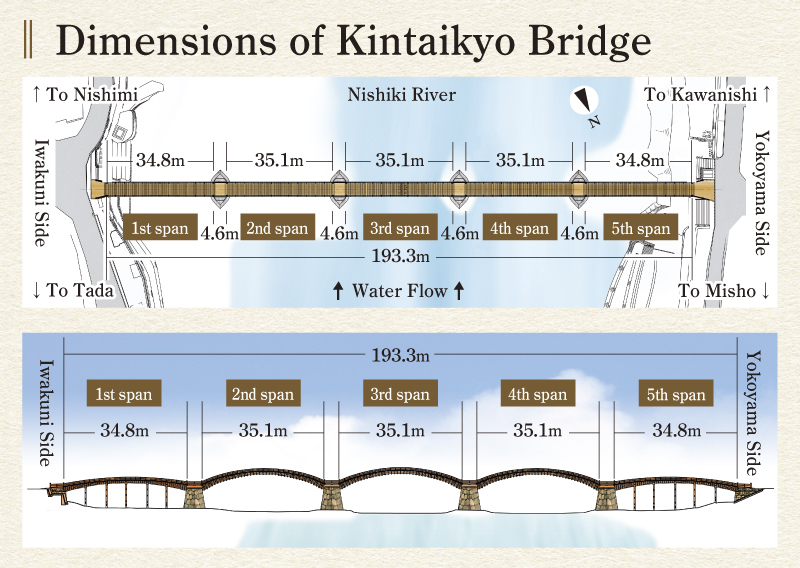Structure
A Manifestation of Wisdom and Skill
A Globally Unique Construction
Wherever you search in the world, there are no other wooden arched bridges constructed like the Kintaikyo Bridge.
However, if we look at bridges made from stone, there are some arched stone bridges. In the Anji Bridge, which was built in Sui, China, at the beginning of the seventh century, oblong “circle stones” (arch-shaped stones) are joined together using metal and fixed in place to achieve a robust arch structure.
Conversely, timber is an intrinsically soft material, and in addition, each timber is slim, making wood difficult to form into an arch shape. Even when the same construction method as stone is used, the necessary strength cannot be achieved. To this end, the “Kintaikyo-type arch” was devised, which combines together components such as beams, wedges, crossbeams and ridge beams.
The beams face from the piers towards the center of the arch, overlaid and protruding outwards while setting angles. The gaps that are created by variations in these angles are filled using wedges. In addition, the five beams that lay parallel alongside each other are held in place transversely using crossbeams. In this way, the beams protruding from each pier connect together in the center using ridge beams. Also, the strength of the bridge is enhanced by binding the components using metallic belts.
This Kintaikyo-type arch is unique, with no other examples worldwide. Using this structure, wooden arches with the unprecedented span of 35.1m have become a reality.
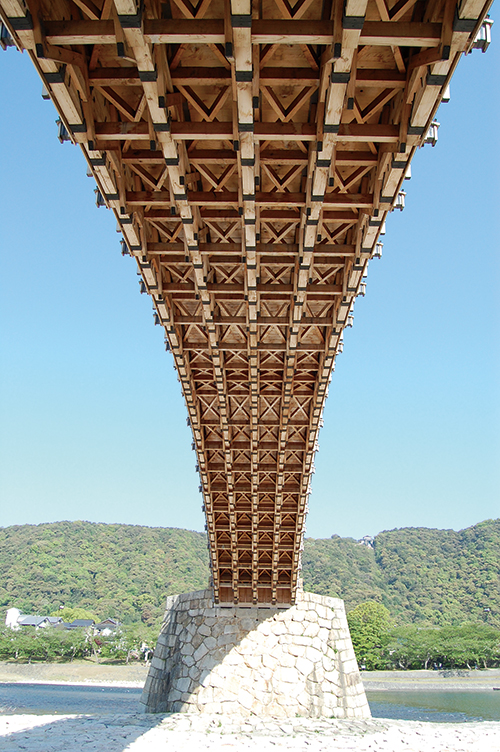
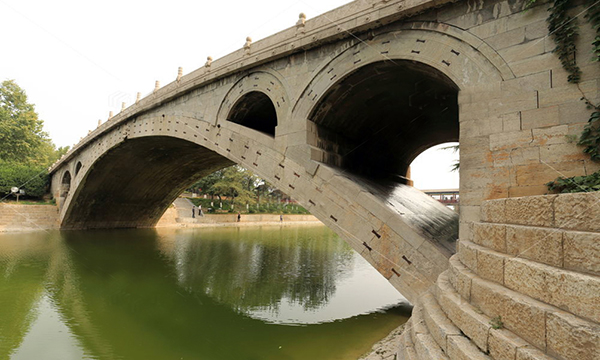
Anji Bridge, China
(arched stone bridge)
*The diagram below shows the structure of the arched bridge as seen from the side.
(1)Beams
Ridge Beams
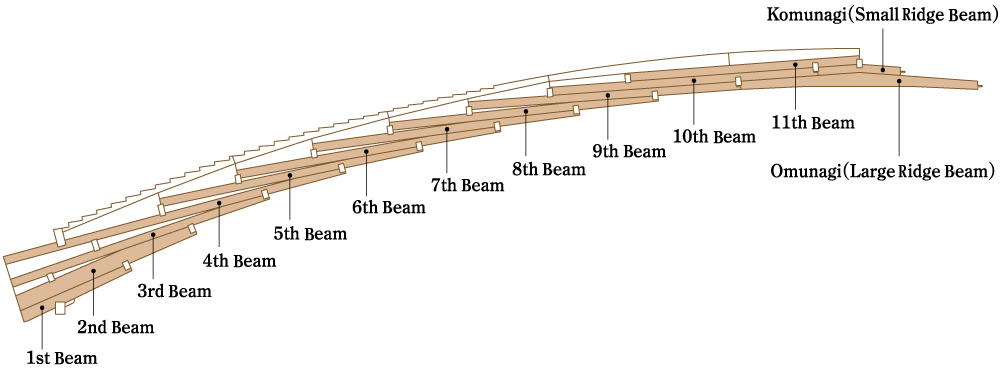
(1)The beams protrude out at angles, from the 1st beam to the 11th beam, and are bound with metallic belts. The beams protruding towards the center are joined to the opposite components by the large and small ridge beams.
(2)Wedges
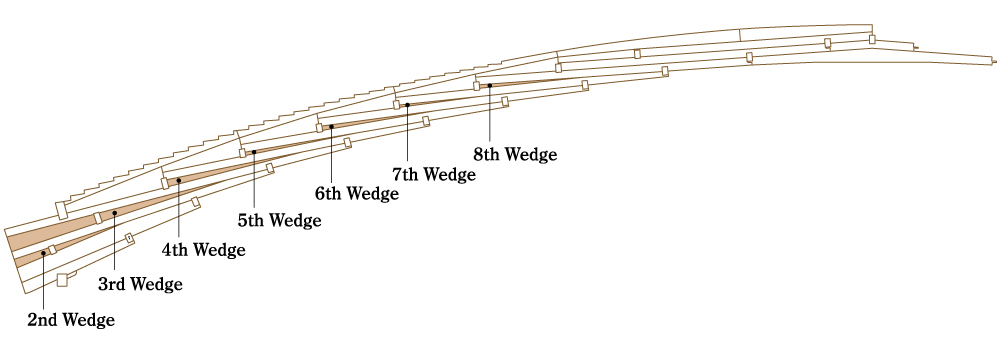
(2) The wedges are V-shaped components that fill the gaps that are created by variations in the angles of the beams above and below each wedge. They are bound together with the beams using metallic belts.
(3)Beams(Crossbeams)
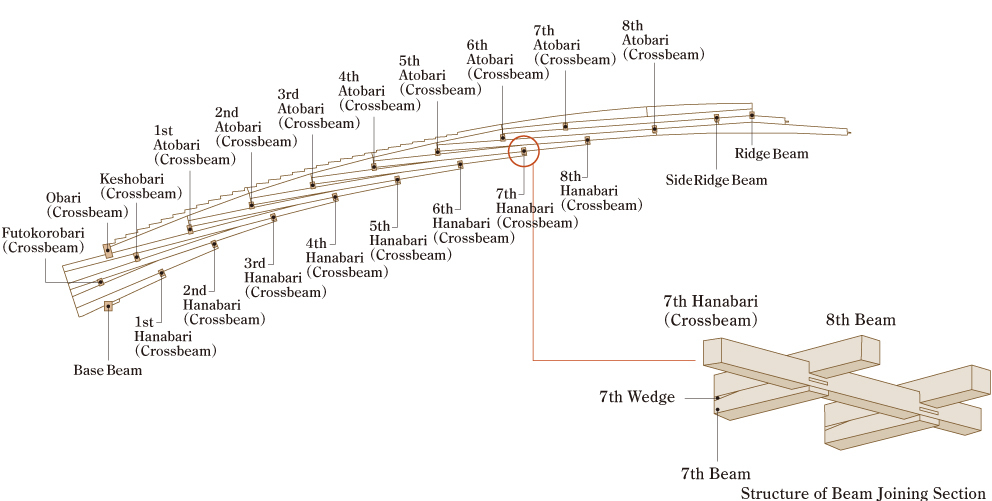
(3) The crossbeams hold the five beams, which are arranged at equal intervals, in place transversely. As a result, the regular, aesthetically pleasing structure of beams running in parallel is achieved.
